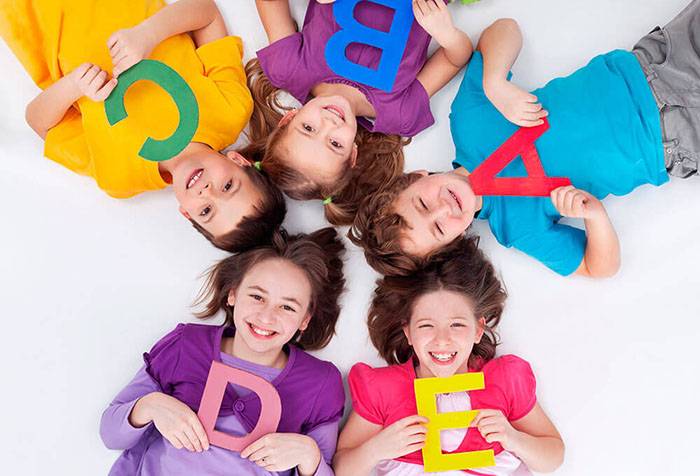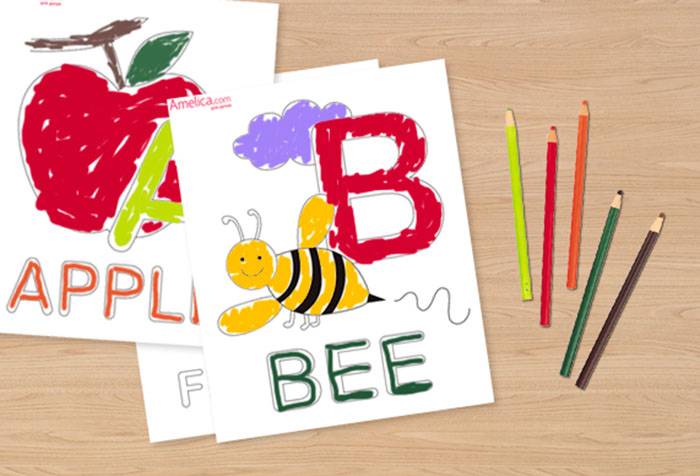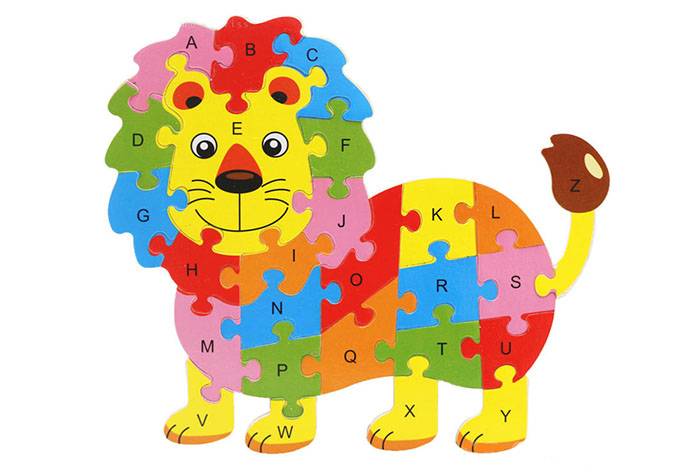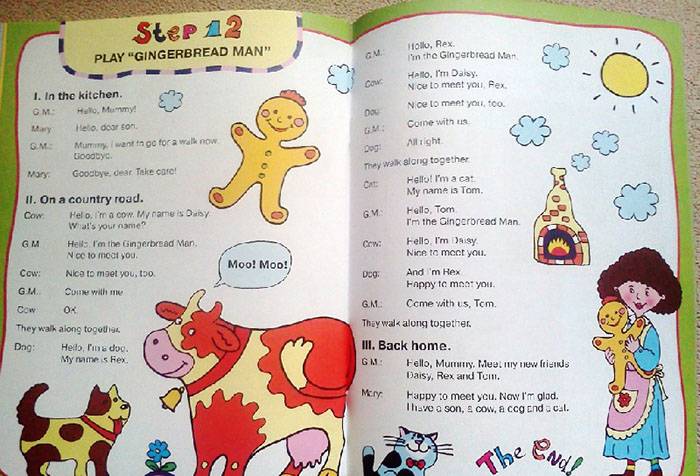Knowledge of English gives a great advantage, opening up a lot of opportunities for a person. Therefore, it is not surprising that many parents of preschool children are concerned about this issue, and, not hoping for a comprehensive school, enroll their children in courses to study it. What are such activities for kids - entertainment or creating a good foundation for the future?
At what age should you start studying?
The examples of Mowgli children available in history convincingly illustrate that you can teach a person to talk only in childhood; later this is no longer possible. In the case of learning a foreign language, the situation is similar: the earlier a child starts learning it, the better it is learned - that’s what scientists say. On the other hand, many parents and teachers are confident that there is no point in spending time and money on teaching English to preschoolers, since at middle or high school age children are able to master the material in 1-3 months to the extent that children spend a whole year on .
An analysis of the characteristics of foreign language acquisition by children and adults in the context of the following categories will help weigh the pros and cons.
- Phonetics and pronunciation. Thanks to the excellent ability to imitate, which remains in children after they have completely mastered the phonetic system of their native language, preschoolers can easily imitate unusual foreign sounds. An adult, unless he has extraordinary abilities, will not be able to reproduce many sounds correctly if the phonetic base was not laid in childhood.
- Grammar. This section of a foreign language is mastered through targeted study, and therefore is accessible only to children of middle school age and older. Preschoolers can only mechanically memorize and repeat individual phrases.
- Reading. The ability to read even short texts in a foreign language implies at least basic knowledge of the rules of grammar. Kids can only read individual words or memorized songs and poems.
- Lexicon. Here the advantage is also in favor of the older age, since the number of new words increases as various topics are studied, and for preschoolers their number is limited.
It turns out that the main advantage of English language courses for preschool children is creating the basis for good pronunciation. If a child attends classes 2 times a week, at best he will get a rough introduction to the subject and master the sound system. Another thing is the parallel study of two languages, as happens in bilingual families. In this case, both languages are involuntarily acquired by the child as native languages at a conversational level, and reading and writing develop later.

Methodological recommendations for teaching English to preschool children
Tatiana Chernyshkova
Methodological recommendations for teaching English to preschool children
Learning English should start from an early age. Learning a foreign language , if classes are properly organized, develops children and raises their educational and cultural level. Thus, as a result of an experiment conducted in schools in England and Wales, involving 6,000 children , it was found that foreign language have a positive effect on knowledge of their native language; many children with weak general abilities showed excellent success in speaking a foreign language . Research from leading universities in the US and Canada has shown that bilingual children develop better cognitive abilities than monolinguals. The beneficial effect of learning a second language on the development of native speech was proven by L. S. Vygotsky, noted by L. V. Shcherba, and other domestic scientists. Long-term experimental teaching of a foreign language , carried out by the staff of the laboratory for teaching foreign languages at the Research Institute of General and Secondary Education of the Academy of Pedagogical Sciences of the Russian Federation, confirmed the “beneficial influence of the subject on children : on their general mental development (memory, attention, imagination, thinking, on the development in children of ways of adequate behavior in various life situations, for better command of the native language , for the speech development of children in general ." The sooner you start introducing a child to the English language environment , the better. Thus, during the first 4 years of a person’s life, 50% of cognitive abilities are developed, by the age of 7-8, basic skills are formed. Starting from 8-10 years, any abilities need to be developed through training. The older you are, the more time you will need to devote and more effort to invest. Therefore, the best option for teaching English to children is to start from the age of 4, or even earlier. So, children speak the languages they hear. Thus, introducing learning English will contribute to its rapid grasp. In the future, when the child grows up, spoken English will be reproduced on a subconscious level without an accent, using correct grammar.
Principles for presenting educational material to preschoolers : For classes to be truly effective and not overload the child, they must follow certain principles.
• Voluntary activities. Under no circumstances should a child be forced to learn English at an early age . If lessons become a chore, they can quickly become boring, and subsequently it may be difficult for the child to learn the language . The main task of parents and teachers is to arouse interest in the language , and the game helps well with this. Through play, children explore the world and easily become involved in the process, easily mastering important language skills .
• The child's motivation and interest in lessons. A child does not have the motivation to learn English that adults have. They don't need to build a career, they don't realize that English in the future. Therefore, it is important to interest the child in something else. If he is interested in the learning , if it is fun and tireless, the child himself will strive to study. Come up with your own motivation.
• Child's comfort during learning . Comfort is another important point when learning . Some children easily stay in a group with other children and the teacher, others need one of the parents nearby. It depends on the age of the child and on his character. If the lessons are natural for the child, he will easily begin to master the material. If you see that a child is resisting learning, you should not ignore it. Perhaps the methodology , he doesn’t like the teacher, or it’s just hard for him. It's worth changing your approach to regain interest.
• Sequence of training . Until the age of six, there is no point in burdening children with rules , spelling and grammar, but it is good to learn new words together through songs, dances, and games. The main thing is that the presentation of the material is consistent and that new knowledge is easy to grasp.
to what the child is already familiar with.
• Persistence. First of all, remember that you have embarked on a difficult path, the reward at the end of which is great. There will be times when there will be no visible results. At these moments, you must support your child and work with him to overcome the difficulties that have arisen without losing momentum. Also, if the method you have chosen is not to your child’s liking, it is better to choose another method . The main thing is to find an interesting technique , and persistence will come by itself.
English classes .
Forms of teaching should not be aimed at mastering as many lexical units as possible, but at cultivating interest in the subject, developing the child’s communication skills, and the ability to express oneself. It is important to achieve certain qualities of mastery of the material, which should allow the child, with a minimum of resources, assuming a subsequent increase in language units in the child’s competence, to use them situationally and meaningfully. Forms of classes can be as follows:
Daily 15 - 25 minute lessons, accompanied by speech in a foreign language during special moments.
Classes twice a week, 25 - 45 minutes with breaks for outdoor games in a foreign language and time for modeling, drawing and making crafts thematically related to the lesson.
Special classes - fairy tale lessons and watching video fragments - as an addition to the main classes.
Meetings with native speakers .
Matinees and holidays where children can show off their achievements - dramatize a fairy tale, recite a poem.
Classes - conversations.
Foreign language classes in nature [4] .
The most successful methods are based on the principle of gradual formation and development of speech action, when the simpler precedes the more complex. At all levels of material presentation, the principle of communication is implemented, that is, everything serves to achieve a certain result in communication. Independent use of speech units must be preceded by their listening comprehension, which corresponds to the psycholinguistic laws of speech acquisition.
We list some methods for teaching English to children :
• methodology for learning English - Zaitsev method . Intended for children under 3 years of age . Also known as learning English using the Zaitsev method with cubes;
• game method
.
A very effective method for teaching children English . The teacher starts games during which learning . Develops all components of language - from grammar to conversational speech;
• design methodology . Designed for children from 4 years old . A certain number of lessons are devoted to a certain topic. Everyone learns something interesting. For the last lesson on the topic, children must bring work on the previous topic;
• combined technique . Mixing different styles of teaching English to children . Here you can include both games and songs, dances, etc., etc. The child will never be bored and will switch from one type of activity to another, which will have a beneficial effect on the results. Methods of teaching English .
• Associative method . method is perfect for children with their developed imagination . Its essence is that the phrase or word being studied is associated with some very vivid image, picture. That is, when they remember the word apple, they imagine a delicious, juicy apple. Subsequently, a vivid image makes it easy to find the right word in memory.
• Communicative method (lexical approach)
.
This is a method of learning a language through communication , discussion - this is how children gradually learn to think in English .
You can discuss how your day went, how interesting the new book or movie was, where you went on the weekend. In this way, children learn phrases and expressions that they can later easily use in speech. • Audio-lingual and audiovisual methods . Using these methods, oral speech is well practiced. They are based on interesting dialogues, by learning which children easily learn to speak.
• Immersion method . Children watch films, listen to songs, thus perceiving original English speech . A good way is to communicate with a native speaker who will not be able to respond in Russian. immersion method English - a good skill that will be very useful in the future. Features of teaching children of different ages . English for preschool children . In preschool age, when learning English , a child first of all learns communication. The main emphasis is on ensuring that children begin to understand and respond to English At this age, the foundations of pronunciation are laid. Children use basic English words , memorize phrases from songs, and learn to recognize words in games. It is important that English words represent concepts that are familiar to children in their native language , and that they are easy to combine with each other. The easiest way for young children to of objects (you can touch them)
and actions
(they can be reproduced)
.
Items of clothing, body parts, family members, greetings, toys, animals - children can already learn all these words in English . Another feature of information perception at this age is that children have a well-developed figurative memory, so words are demonstrated clearly. Real objects, pictures, toys help with this. Drawing , coloring, cutting, dotting are also actively used in Often a mandatory component of a lesson is a physical education lesson, in which all exercises and actions are also accompanied by naming them in English . it is still difficult for preschoolers to maintain attention for a long time , so the lesson usually does not exceed 30-40 minutes. As a rule, classes are held 2 times a week. English lessons , attention, intelligence, observation and prepare the child well for school.
Features of teaching a foreign language to children of senior preschool age (5-6 years old)
.
Teaching children of senior preschool age has its own characteristics. When starting to work with children, it is very important for a teacher to know that the level of development of children is still insufficient for them to independently solve many problems that arise in the course of their activities (play, productivity, speech, etc.)
.
Independence develops in a child gradually under the guidance of an adult. The sixth year of life is important in preparing a child for school. At this time, in the pedagogical literature it is recommended to use techniques in teaching children that ensure an increase in children’s , the development of mental activity and curiosity, the formation of elements of targeted attention, voluntary memory and imagination, and initial forms of conscious control of their behavior. In this regard, great importance is attached to developmental teaching methods - systematization of the proposed knowledge and skills, the use of auxiliary visual aids that facilitate the child’s learning process, the formation of skills to perform tasks of a certain type and apply them in new conditions. In the process of education, an important role is given to the formation and development of children's relationships, the initial awareness of the moral meaning of the acquired rules of behavior. Creating a friendly atmosphere in a group of children , their ability to treat their peers with care, to show kindness and attention is a necessary condition for the successful completion of any task in the learning . To understand the nature of children's children's communication in various types of joint activities, especially in play. In order to help children, especially preschoolers , tune in to completing educational tasks, constant monitoring of children's . The kind, attentive attitude of an adult will save him from many griefs and unnecessary worries and avoid stress. Children they respond to requests or instructions, and strive to please them. Relationships with peers depend on how well the child meets their requirements and how satisfied his peers are with him. It is necessary to teach children positive ways of communication: to treat their peers kindly, to show kindness, friendliness, fairness, to help organize joint activities, to encourage success, to teach them to give joy to the people around them.
English for children of primary school age . Primary school age is also a time of exploration and knowledge of the world. Children during this period are very inquisitive, active, it is still difficult for them to sit still, and they can get tired quickly. games, active tasks, poems and songs, and cartoons are often also used for primary school age The child no longer loses interest so quickly during the lesson, but it is still important to build the process in a fun way and alternate different tasks. An important aspect of this age is the beginning of educational activities. The child's attention increases and becomes more stable. By the age of 7-9, it is much easier for children to carry out a given program over a certain period. Memory improves – it becomes consciously regulated. At the same age, children's desire for achievements increases . They already know how to set goals and achieve results. This feature allows you to instill interest in the English language . Lessons can already last 40-45 minutes, they can be held 2-3 times a week. Parents can, of course, teach English to preschoolers or primary school children on their own. To do this, they themselves must have a good command of the language in order to pronounce it correctly. You can use well-known techniques developed by specialists. However, firstly, parents do not always have the opportunity to study with their children regularly, and secondly, the level of language or teaching skills may not be sufficient. a language well , and quite another to explain or help a child learn it. A good way is to hire a tutor. But this method is more suitable for schoolchildren who need, for example, to improve their level. If you want classes to be easy and comfortable, and a systematic approach to learning , then you should send it to a language school , where there are special programs for children under 7-9 years old . Classes there are held in groups, which contributes to the child’s socialization and better language . He not only learns English , but also develops teamwork skills. Professionals work with children who use the most modern techniques and create the necessary interest. So, gradually, through games and exciting tasks, English becomes a part of the child’s life, which subsequently helps him achieve success in life. Thus, the methods of teaching English to children , as well as its teaching, are different. All that remains is to choose exactly the method that will be interesting to the child.
Recommendations for conducting classes and games
Despite the limited capabilities of preschoolers in mastering a foreign language, many teachers note that children who studied English at an early age master it more easily and successfully as part of the school curriculum. Not the least role in this is played by the positive attitude towards classes, formed in children thanks to the playful form of learning to which they are accustomed. Games in English lessons are also good because they can be not only educational, but also developmental.

Games with cards
Visual-figurative thinking, characteristic of children, makes cards with English letters, words, actions and objects written on them one of the most popular learning tools at all its stages. Here are just a few examples.
- “Name the picture.” This game is good for beginners: the teacher shows the children a card and names the animal drawn on it, for example a cat, and then passes it to one of the students. The guys take turns repeating the word “cat”, passing the picture to each other. This exercise allows all participants to practice pronunciation, and also creates a “success situation”, which psychologists consider very important for increasing motivation to learn. Over time, this game can become more difficult. For example, children can say not just “cat”, but “this is a cat” - the complexity of pronunciation increases, and the simplest grammatical structure appears.
- “Describe the picture.” At the next stage, you can give the task to each of the participants to add some suitable description to the word: “little cat”, “black cat”, “lazy cat” - of course, after studying the corresponding words.
- "What's missing?" You need to pin several cards on the board and ask the children to memorize them, and then have them close their eyes for a while. The presenter removes 1-2 pictures, after which the students remember and name the disappeared images. This game develops memory and attention.

Poems and songs
One of the best helpers in working with preschoolers is music. Children associate it with fun and strengthen their sympathy for the subject being studied. Simple poems and songs are easy to remember, help expand vocabulary and create a feeling of quick results: while reciting a rhyme, the child seems to already be speaking English, and this is much more interesting than simply repeating words or the alphabet. It motivates. In addition, poems often contain useful information: for example, about the seasons, days of the week, colors of the rainbow, numbers. There are songs with names of body parts or some physical actions - their performance must be accompanied by appropriate movements.
Cartoons and educational videos
A lesson in a group of preschoolers involves alternating several types of activities, since children cannot concentrate on any one task for more than 10-15 minutes. When inventing various games for them, one should not neglect the achievements of technological progress: educational cartoons in English will not only delight little students, but will also allow them to consolidate authentic sounds in their memory, learn new words and mechanically remember the rules for using grammatical structures, the essence of which they will comprehend through several years at school. After watching the video, it will be useful to arrange a short scene based on it, using the phrases and words heard in it.

Guessing Games
Asking questions and drawing logical conclusions from the answers is a useful exercise for children, even if it is done in their native language. During English classes, memory work is also connected to logical mental operations. You can guess animals, people, vegetables, fruits - all within the framework of the material covered.
In the game you can use not only different groups of objects, but also different grammatical entities.
- Third person - one of the players thinks of a vegetable, and the rest ask him questions: “is it red?”, “is it round?”, “is it a tomato?” When the item is guessed, the presenter gives an affirmative answer: “Yes, it is a tomato.”
- Second and first persons: “Are you a tomato?” - “Yes, I am a tomato.”
This way, children automatically learn grammatical patterns, which helps develop their ability to speak English rather than just memorizing individual words.

English at 3-4 years old
The debate about early learning is as old as the world - there is no consensus on this matter. But the generally accepted “starting” age can be considered 3 years. As for the first acquaintance with foreign languages, the period from 3 to 7 years is considered the best time for this.
This is due to the fact that it is at this age that the child develops logical forms of thinking and voluntary attention. The formation of the latter leads to the fact that the child begins to resort to already mastered methods of memorizing information: repeats what he hears, tries to comprehend what is being memorized in the required sequence.
During the same period, speech and phonemic hearing intensively develop, vocabulary expands, and the morphological system of the language spoken by everyone around is fixed in the mind.
Some parents refuse preschool education for their child so as not to “deprive him of his childhood,” because education is associated with coercion, routine, and punishment for mistakes. Thick textbooks with yellowed pages and teachers who have never been to English-speaking countries are a wall between us and fluent English. It is up to our children to overcome or even break this wall; today’s young millennials are tomorrow’s bilinguals.
Gradually, the fear of early learning recedes, because, it seems, there is no longer any need to explain that a little person can be taught anything just by playing with him.
At such an early stage, it is not necessary to send your child to special courses. You yourself will be able to cope perfectly with the first stage of mastering English. In addition, classes with a parent eliminate the stress factor of an unfamiliar place, teacher and other children. Here's how to do it.
By the way, online English classes for children 7 years old are held in a comfortable environment: students can study at home, at their grandmother’s, or at the dacha. In individual lessons, no one will distract the child from gaining new knowledge, and textbooks and notebooks are not needed - only the Internet.
General recommendations, literature
The variety of English lessons for kids is endless. Drawing and coloring, modeling, crafts, songs and dances, skits, active and role-playing games - all this can and should be organically included in classes. It is useful and fun for children to study in a group, but if you wish, it is easy to organize training for your child yourself at home. In this case, it is worth choosing a good textbook to rely on.
Experts recommend using textbooks by English-language authors, written entirely in English. Among them are guides for beginners - for example, the Activity Book for Children from Oxford, which contains several parts of a fascinating coloring book on which objects are labeled in a certain color. During the coloring process, the child will remember the names of the colors.
Picture Grammar for Children is another picture-based textbook. It is intended for children who have already passed the elementary level. Here, students are encouraged not only to memorize new words, but also to learn to write them, compose sentences from them, and answer questions. In an easy and unobtrusive form, the child will train oral speech skills, and this is exactly what is primarily meant by language proficiency. There are also excellent Russian-language textbooks and tutorials, for example, “English for Kids” edited by N. A. Bonk (authors I. A. Shishkova, M. E. Verbovskaya) . Equipped with interesting audio materials, it is perfect for working with children 4-6 years old.
The book “English for Children. Great tutorial" by Sergei Matveev . The information in it is presented clearly and in detail so that parents can easily work with their children on their own.
When deciding whether it is necessary to teach English to a child under 6-7 years old, it is worth considering that such classes will not only benefit him in preparation for school, but will also broaden his horizons and help him feel more confident in the company of his peers. You shouldn’t expect your child to speak English right away, but there is no doubt that the acquired knowledge will come in handy when learning the language at an older age.
English for children 5-7 years old
Teaching English to a 5-7 year old child does not differ significantly from teaching a younger child. The basic rules and techniques remain the same. The basis is the game. This is the only way a child at this age can truly effectively learn the material.
After four years, parents may begin to think about courses, language schools and tutors. During this period of development, the child experiences a greater desire to communicate with peers.
If a three-year-old child may perceive such a situation as hostile, then a six-year-old child, on the contrary, should receive enough social interaction. In addition, courses and various language clubs will help your child overcome the fear of speaking a foreign language.
We all know firsthand what a “language barrier” is. The sooner a child gets used to communicating in English, the greater the chance that, as he grows up, he will only become more confident when he finds himself in a particular language situation.
As a rule, if the study begins at the age of three, then by the age of 5-7 the child can already quite coherently express himself in simple sentences in English, understand simple speech and construct grammatical structures more or less correctly.
Such successes should not be a reason to take a break or rest before starting school. You must be prepared that you will have to learn a second language, if not your whole life, then most of it. Because the human brain has an unpleasant habit of forgetting everything we need very, very quickly if we don’t use it in any way.
Continue to play with your child and integrate new words into everyday situations. You can play in different ways. Nowadays, many parents are leaning towards online education. There can be many reasons: lack of time, lack of confidence in your own teaching talents, or simply a desire to dilute live classes with online educational games.
Myths around online education have been dispelled and refuted a long time ago. We know that as a means of development, online games are in no way inferior to communication between a child and a teacher.
With the help of online resources, your child will easily learn to read and count in English, develop intelligence and logical thinking. The gameplay in educational games is designed in such a way that, in addition to the main skill (reading or counting), the child acquires secondary knowledge about the world around him.
At the same time, the issue of using gadgets to teach little ones raises a lot of controversy. To maintain a healthy balance between live learning and online education, keep your use of gadgets under strict control. Limit your child's screen time. Don't forget to involve him in lively outdoor games.
And don’t forget to disable built-in payments if your child learns from a smartphone or tablet - this will help you avoid unplanned purchases within games.
| Websites with games for teaching English Games to learn English. There is simply a huge number of flash tasks on the site. They all have different levels of difficulty, so you can easily choose the ones that suit you. The main goal of the selection on the site is to help you master as many English words as possible and master basic English grammar skills. Many games support download features for offline play. Digital dialects. An excellent site for those who are taking their first steps in learning English. There are a total of 12 tasks collected on the site. It is assumed that each completed game should help you learn 10-15 English words. It is important that the lessons are designed in such a way that new words are not just learned, but learned correctly - next to each word there is a headphone icon, by clicking on which you can listen to how this word is pronounced. 2game. On the site you will find a lot of tasks. All of them are in English, but not all are aimed at teaching. If you study the resource well, you can find many educational games for the little ones. All games are divided by topic. You can choose games for girls and boys. Funbrain. A useful site for learning the language, which contains many mini-games, videos and reading materials. Pay attention to Word Confusion. In it, the child is presented with a sentence in which one word is missing. You need to select it from the given answer options. Games of this type will help the child feel and understand the difference between similar words. |
Of course, there can’t be too many games, but it’s better to continue alternating between online and live outdoor lessons. You can also use fine motor skills: ask your child to draw a number, letter or object. In the future, this will help him begin to write and remember words.
It is assumed that at this age you can already start reading books. Choose thin A4 size books with large print and colorful pictures. In this case, the more pictures, the better. Read aloud, ask to repeat and retell. Reading is a process that involves an incredible amount of brain processes. It is unlikely that anything more useful in learning a language than reading has yet been invented.
The older the student, the longer and more complex the cartoons he watches should become. From 15-20 minutes you can go to 30. Select cartoons where the characters’ phrases become more complex. The storyline should also become a little more complicated.
Best cartoons to learn English. Here is an example of a cartoon that is ideal for a child 5-7 years old. Make sure that the dialogues are not too complex or long. The child's attention instantly switches when he ceases to understand what is happening on the screen. Getting that attention back is never easy.






